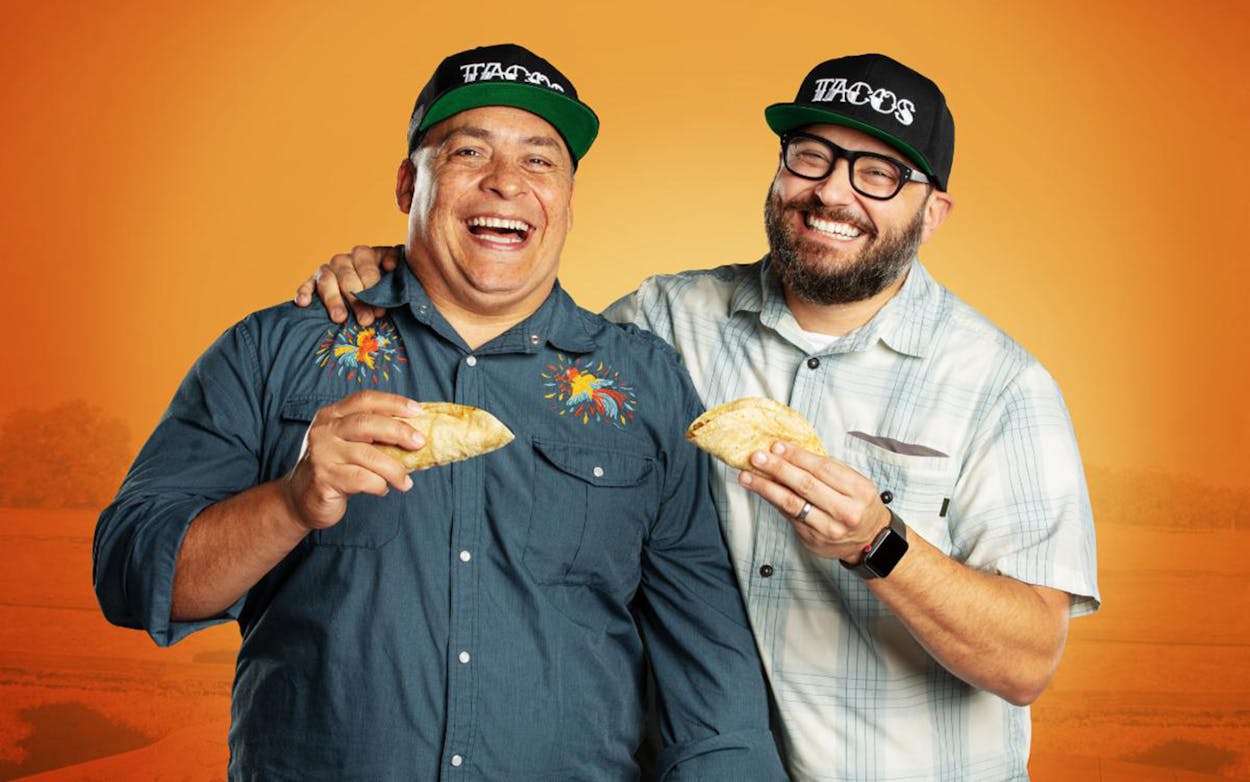After releasing two books—Austin Breakfast Tacos: The Story of the Most Important Taco of the Day, in 2013, and The Tacos of Texas, in 2016—and producing the online companion video series The Tacos of Texas, longtime Austin “Taco Journalists” Mando Rayo and Jarod Neece have taken their show on the road with United Tacos of America.
Premiering at 9 p.m. October 15 on acclaimed director Robert Rodriguez’s El Rey Network, the eight-episode series highlights the diversity of tacos as well as the cultures, people, and issues behind them in eight cities across the country. The show, which was also executive-produced by Rodriguez, is an entertaining and informative look at how integrated tacos are into American life.
Three of the episodes are set in Texas, including the premiere, which covers Houston and Asian American tacos. In episode three, they explore the brisket tacos of Austin. But it’s the border-set Rio Grande Valley installment (episode five) that is especially impactful. There’s still plenty of laughing at their own jokes—as much a signature as their embroidered snapbacks—but in United Tacos of America, Neece and Rayo take a step back. Take, for example, the interview with two of the Angry Tías y Abuelas of the RGV. In the segment, Cindy Candia and Nayelly Barrios, members of the grassroots group dedicated to offering asylum-seeking migrants basic services and goods, are discussing their work and the reasons they do it. One of the women begins to tear up. “These are not criminals. These are people fleeing death. So, it’s a no-brainer,” Candia says, wiping tears from her eyes. “They’re human beings.” Tacos aren’t just props; they are a doorway to a greater story. This is United Tacos of America at its best.
“We definitely feel that this isn’t our show. This is their show,” Neece tells me over the phone. “And so, as taco journalists, like you, we’re here to tell their stories. Ultimately, the show is about the stories of these people, where they come from, where the tacos come from, and then we learn what they’re dealing with in day-to-day life. Down at the border, there are a lot of things happening there. It’s really cool that the local community is becoming involved, not because they want to, but because they have to. They’re the only people who are going to save them, who are going to help them. There’s nobody else.”
Conversations with El Rey for the show began just seven months ago. “The turnaround was crazy,” says Rayo; he and Neece worked with director Dennis Burnett and a crew of about a dozen people. In addition to the Texas cities, they visit Los Angeles, New York, Chicago, New Orleans, and Lexington, Kentucky.
Rayo echoed Neece’s sentiment about their goal with this project. “The opportunity that we have to allow them to tell their own story takes it to a deeper level, for sure,” he says. “Obviously, me being Chicano, Mexican American here in Texas, the opportunity that I have to not only share the love for the taco, to share my culture, and connect with people and find ways for them to tell their stories, is probably the most rewarding thing.”
- More About:
- Tacos
- Film & TV
- Television
- Robert Rodriguez
- Rio Grande Valley








